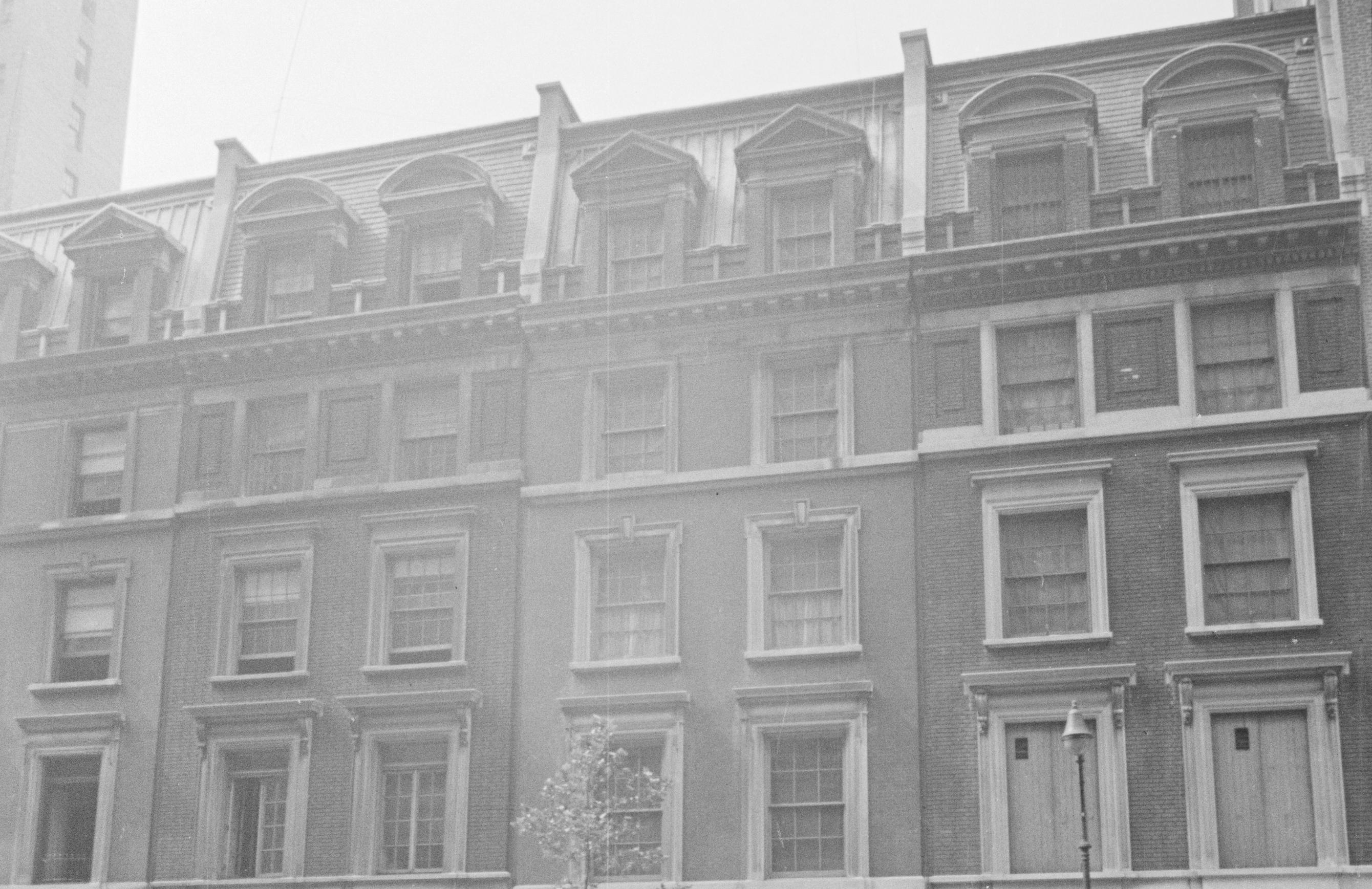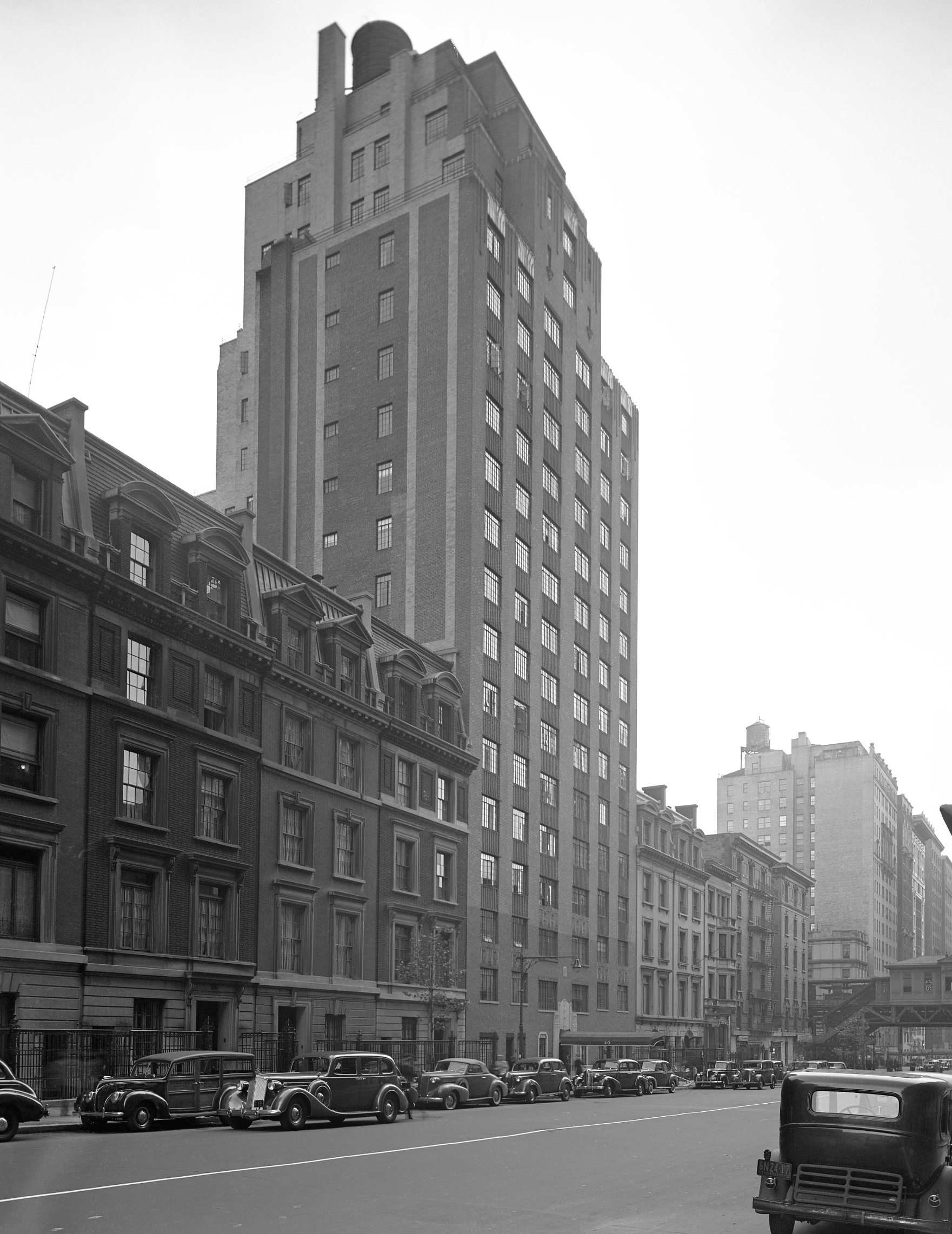
36 West 86th Street
by Tom Miller
In 1886, the year he was elected mayor of Elmira, New York, John Barry Stanchfield married Clara S. Spaulding. Born on March 13, 1855, Stanchfield was educated as an attorney. He had been District Attorney of Chemung County, would serve in the New York State Assembly from 1895 to 1896, and run for Governor in 1899.
Clara, who was born in Elmira in 1849, was a schoolmate and intimate friend of Olivia Clemens, wife of author Samuel Clemens. According to Clemens’s biographer, R. Kent Rasmussen, Clara had accompanied “Livy” to England in 1873 when Samuel Clemens was working on A Tramp Abroad. The close relationship resulted in John Stanchfield’s assisting Samuel Clements with legal entanglements following Olivia’s death in 1904.
John and Clara brought their children, Alice and John Jr., to New York City around the turn of the century, where John became a partner in the law firm of Chadbourne, Stanchfield & Levy.
John and Clara Stanchfield paid $80,000 for the residence, equal to nearly $2.75 million in 2024.
On July 4, 1908, the Real Estate Record & Guide reported that developer William H. Hall, Jr. had sold the 25-foot wide house at 36 West 86th Street, saying, “This dwelling is the sixth one out of a row of 8 recently completed.” The neo-Renaissance style row house had been designed by Welch, Smith & Provot. Sitting upon a rusticated limestone base, its red brick midsection was trimmed in limestone, and its fifth floor took the form of a steep, slate shingled mansard with two brick dormers. John and Clara Stanchfield paid $80,000 for the residence, equal to nearly $2.75 million in 2024.
The Stanchfields retained their large home in Elmira. Because of their deep ties there, when Alice became engaged to Dr. Arthur Wright in 1912, a “large wedding at the Elmira home” was planned, according to The New York Times. Those plans were upended when Clara fell ill. On April 28, the newspaper reported, “it was decided to have a quiet wedding at the New York house. Mrs. Stanchfield, who is convalescent, was present.”
The article noted, “The house was beautifully decorated with flowers from the Elmira estate; lilacs, Japanese quince, and other spring flowers were used in profusion.” Following the ceremony, 150 guests attended the reception.
In January 1915, the Stanchfields sold 36 West 86th Street to Horace A. Saks, of Saks & Co. He and his wife, the former Dorothy Drey, had two children–John Andrew and Edna Jane. The family’s summer home was in Elberon, New Jersey.
Born on July 14, 1882 in Baltimore, Saks graduated from Princeton in 1903. He founded the department store with his father, Andrew; his uncle, Isidore; his brother, William A.; and P. A. Conne. Horace Saks was a leader in the store’s expansion and was largely responsible for its move to Fifth Avenue and 49th Street.
Horace and Dorothy filled the 86th Street residence with art treasures. The New York Times later remarked that Saks “was a collector of portraits and of Chinese porcelains, of which he had a large and valuable collection.”
Horace A. Saks’s funeral was held in the 86th Street house on November 29, 1925.
On November 25, 1925, Saks was at work when he first complained of a carbuncle on his cheek. He consulted Dr. A. A. Berg, who sent him “without delay” to Mt. Sinai Hospital for treatment. The New York Times reported, “When the wound was examined, it was found that septic poisoning had already developed. Measures were taken to combat the infection, which had spread through his system.” Despite the doctors’ efforts, Saks died within forty-eight hours.
Horace A. Saks’s funeral was held in the 86th Street house on November 29, 1925. At the time of his death, he was also a director of Gimbel Brothers, Inc., and among the honorary pallbearers were five Gimbel brothers.
On August 5, 1927, when The American Hebrew announced that Dorothy Saks was “passing the summer in European centers,” the West 86th Street neighborhood was drastically changing. Businesses were encroaching onto the formerly exclusive residential block. How long Dorothy remained is unclear, but in 1945, her former home was converted to apartments.
That changed in the late 20th century when 36 West 86th Street became the Bard Graduate Center’s academic facility. A restoration-renovation completed in 2000 resulted in two additional floors (unseen from the street) and an expansion at the rear. The new spaces accommodated a 75-seat lecture hall, digital imaging center, library, classrooms and offices. A second renovation combined 36 West 86th Street internally with 38. The exteriors of both houses survived wonderfully intact.
Tom Miller is a social historian and blogger at daytoninmanhattan.blogspot.com



